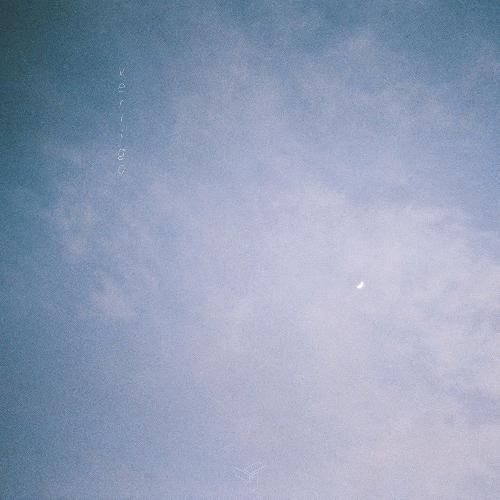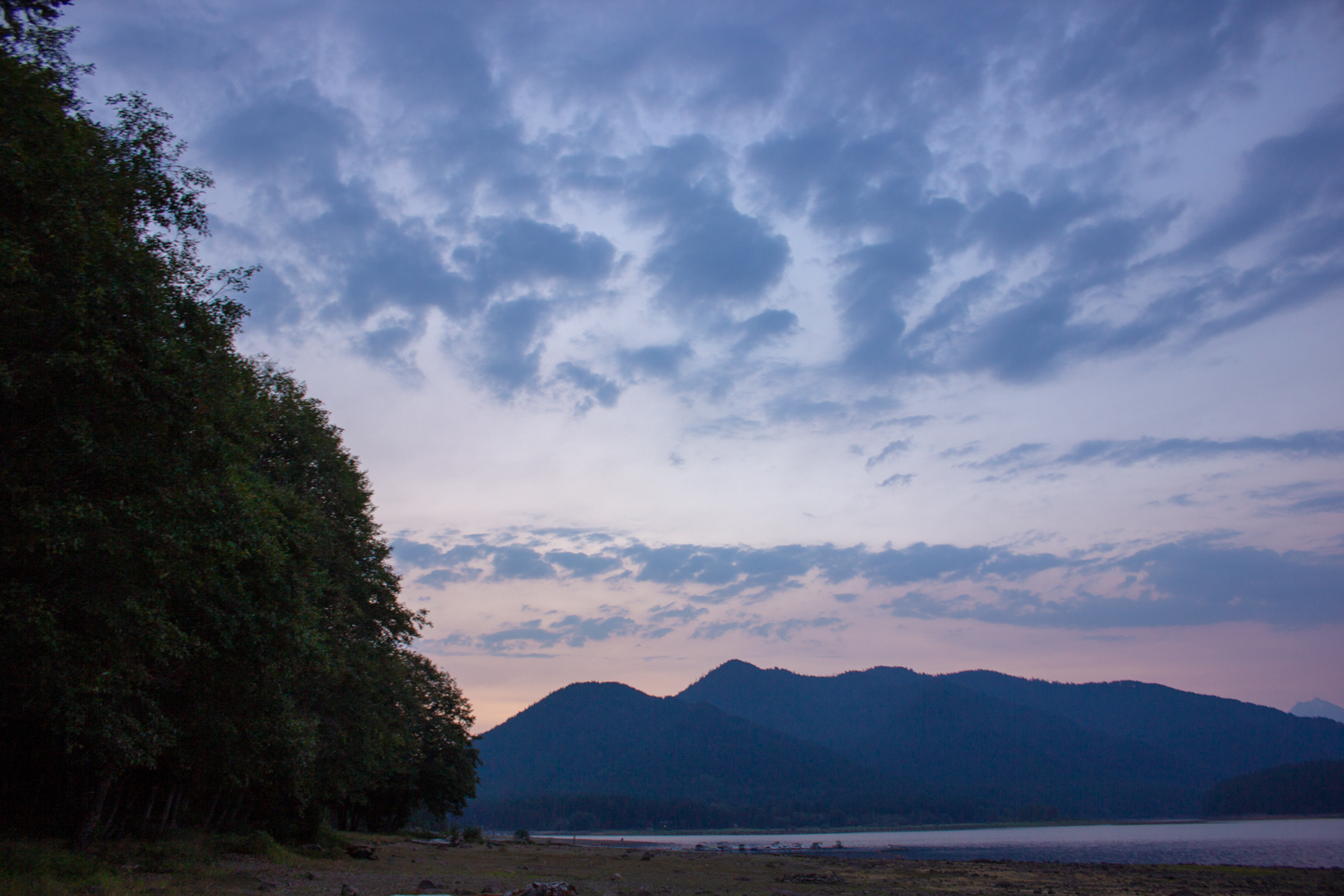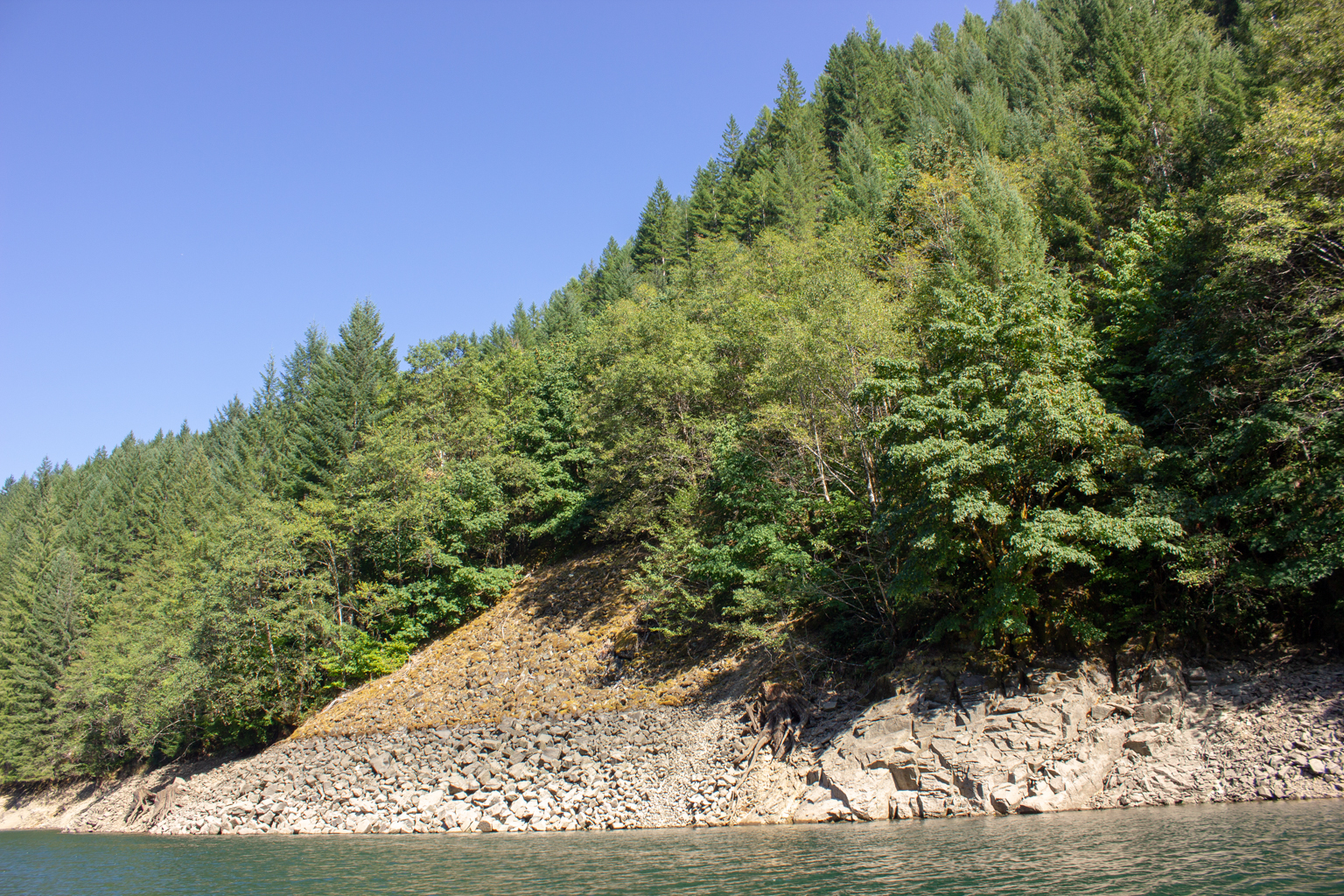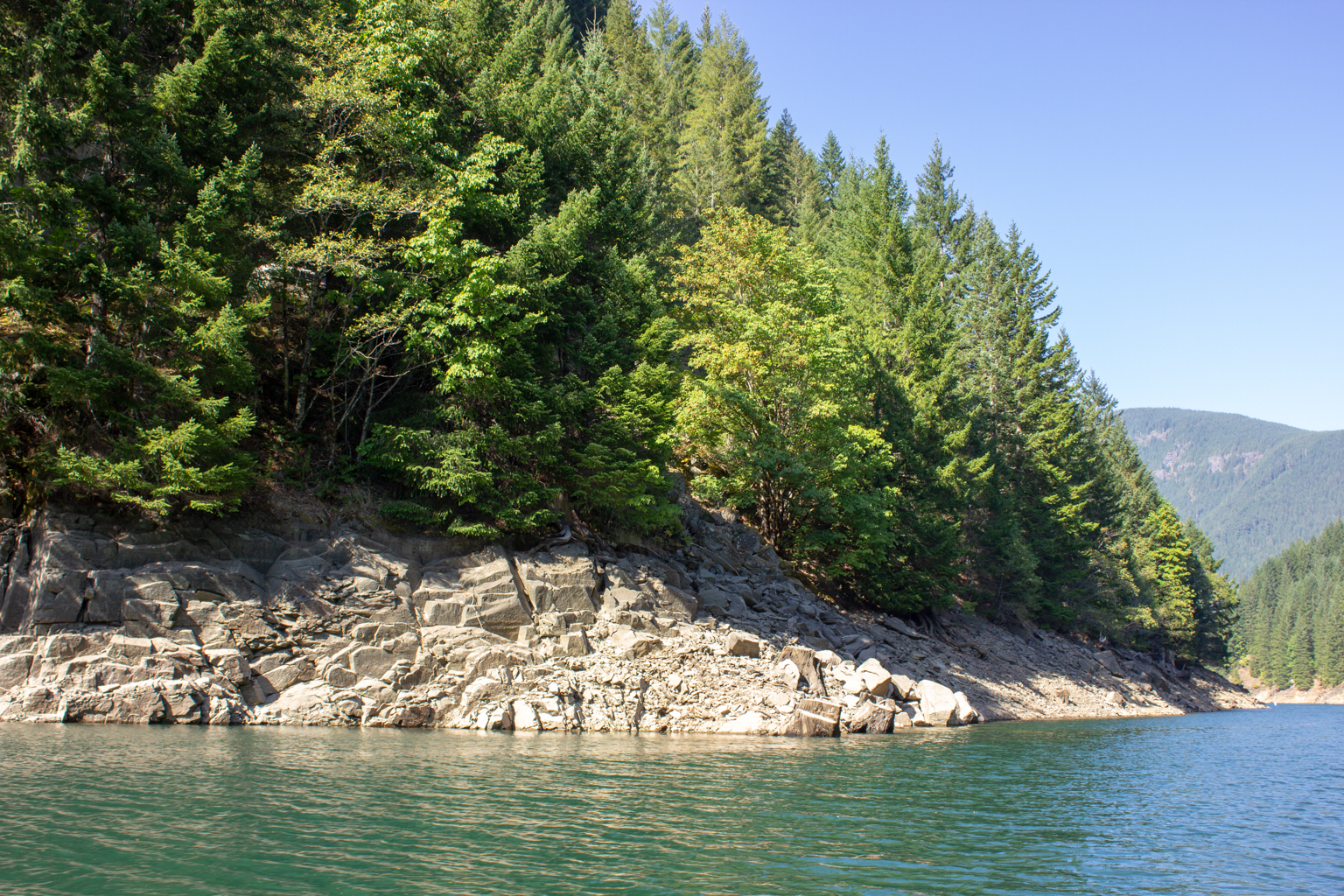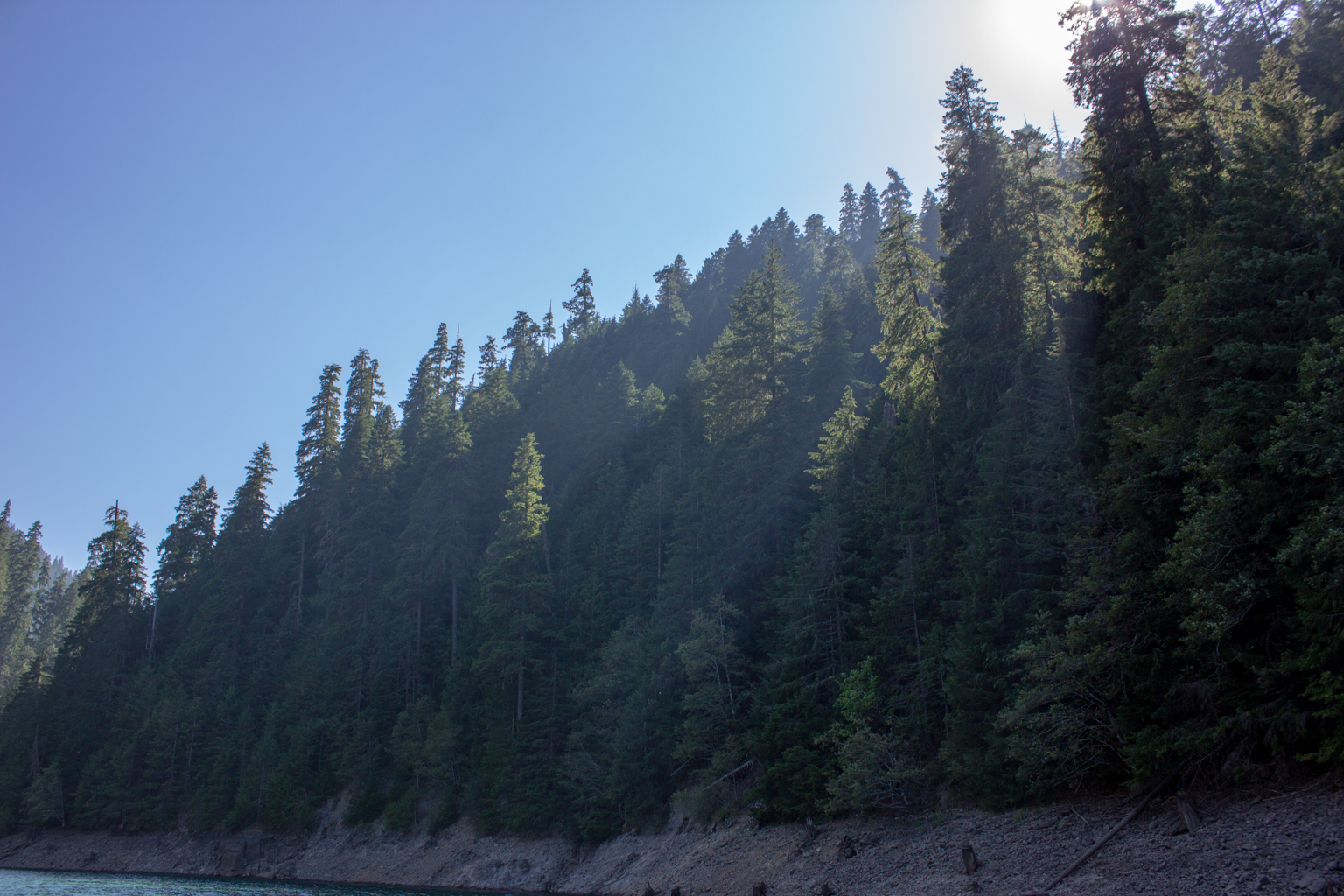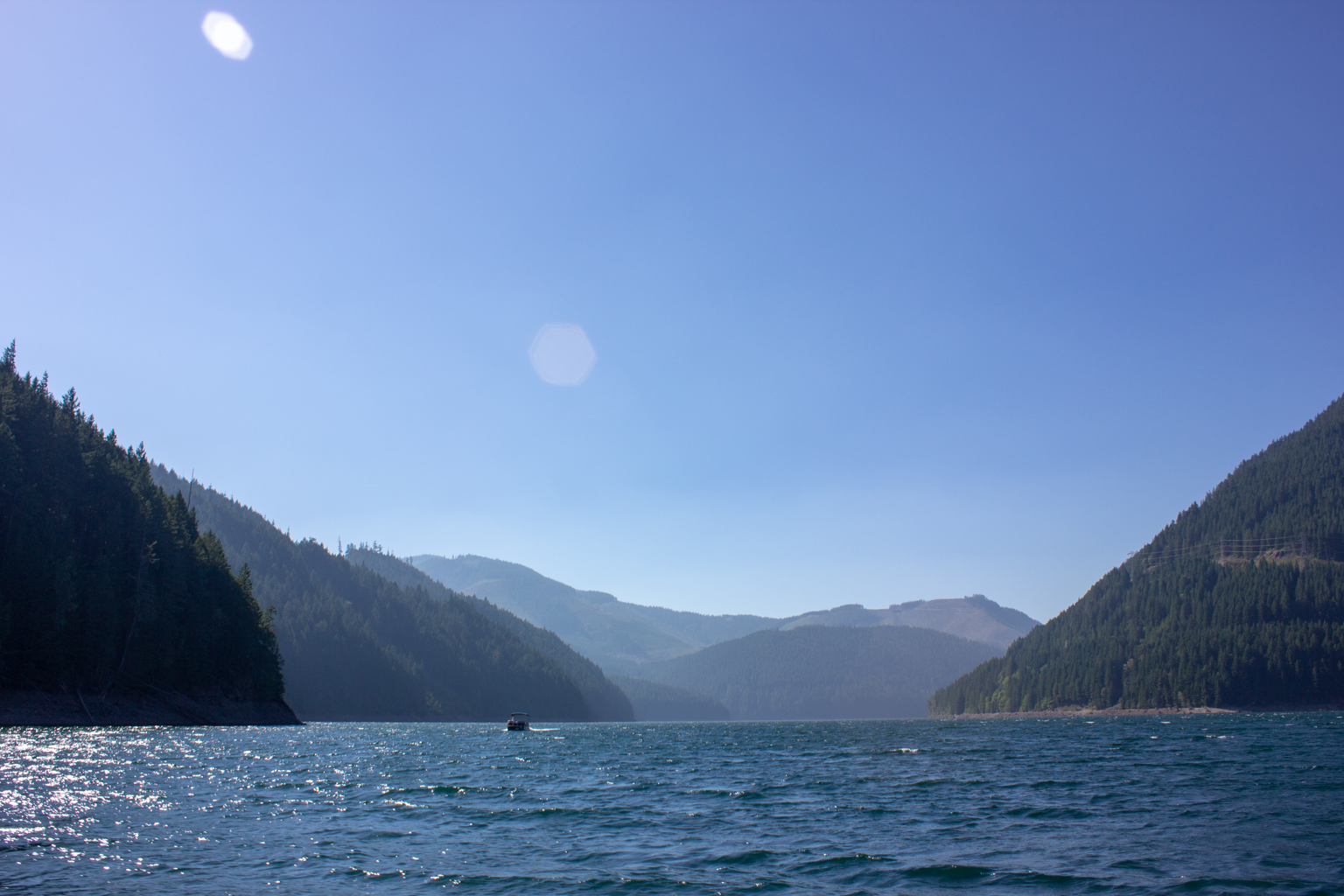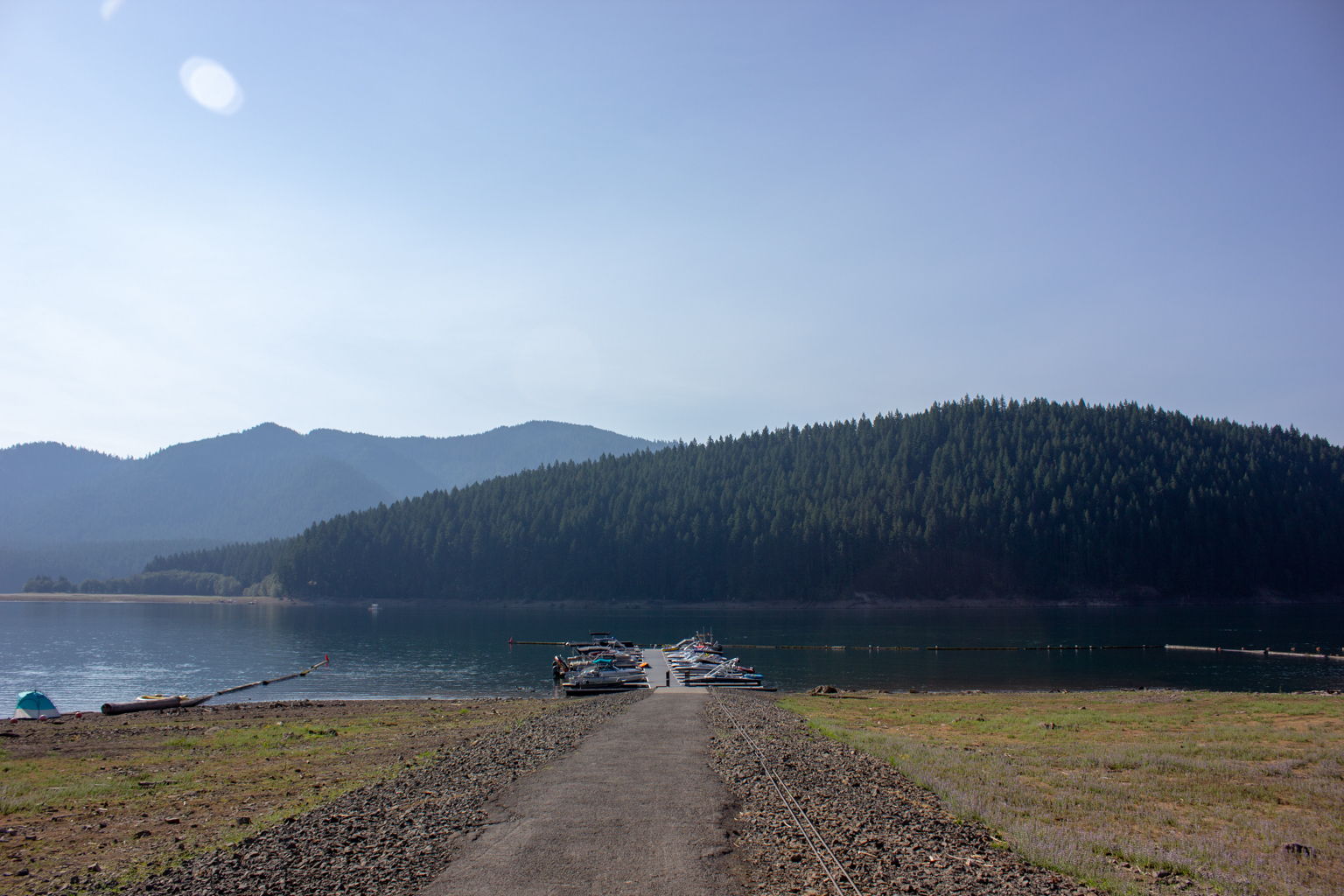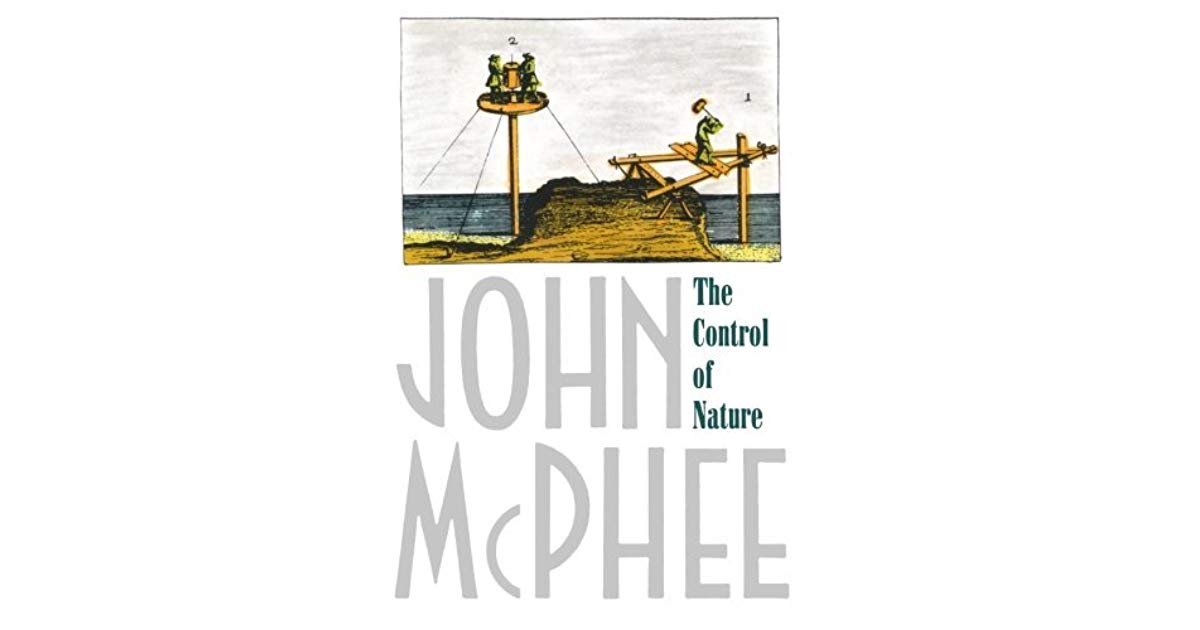John McPhee
I’ve actually had this book for quite a while; one of the essays in it was required reading for a class I took, oh, two years ago or so? Something like that. I quite enjoyed the read at the time, but somehow never thought to read the other essays in the book. I found it again in the whole mess of moving out of campus housing after graduation and decided to toss it into the to-read pile, and I finally got around to it.
And I’m glad I did; while “Los Angeles Against the Mountains” wasn’t quite as fun to reread as it was to read the first time around, the other two essays were both just as enjoyable on first read as I’d hoped. McPhee’s writing style is beautiful; very visually descriptive, deeply informative, and with well-timed flashes of humor throughout.
I’m going to split this review up a bit and include some excerpts from each of the essays, to try to give you a sense of not only McPhee’s voice, but also the content of the essays.
“Atchafalaya”
The first essay, “Atchafalaya,” follows the US Army Corps of Engineers and their work on the Mississippi River; it’s far more involved than I’d ever thought, and the project is fascinating.
On the outflow side—where the water fell to the level of the Atchafalaya—a hole had developed that was larger and deeper than a football stadium, and with much the same shape. it was hidden, of course, far beneath the chop of wild water. The Corps had long since been compelled to leave all eleven gates wide open, in order to reduce to the greatest extent possible the force that was shaking the structure, and so there was no alternative to aggravating the effects on the bed of the channel. In addition to the structure’s weight, what was holding it in place was a millipede of stilts—steel H-beams that reached down at various angles, as pilings, ninety feet through sands and silts, through clayey peats and organic mucks. There never was a question of anchoring such a fortress in rock. The shallowest rock was seven thousand feet straight down. In three places below the structure, sheet steel went into the substrate like fins; but the integrity of the structure depended essentially on the H-beams, and vehicular traffic continued to cross it en route to San Luis Rey.
Then, as now, LeRoy Dugas was the person whose hand controlled Old River Control—a thought that makes him smile. “We couldn’t afford to close any of the gates,” he remarked to me one day at Old River. “Too much water was passing through the structure. Water picked up riprap off the bottom in front, and rammed it through to the tail bed.” The riprap included derrick stones, and each stone weighed seven tons. On the level of the road deck, the vibrations increased. The operator of a moving crane let the crane move without him and waited for it at the end of the structure. Dugie continued, “You could get on the structure with your automobile and open the door and it would close the door.” The crisis recalled the magnitude of “the ’27 high water,” when Dugie was a baby. Up the alley somewhere, during the ’27 high water, was a railroad bridge with a train sitting on it loaded with coal. The train had been put there because its weight might help keep the bridge in place, but the bridge, vibrating in the floodwater, produced so much friction that the coal in the gondolas caught fire. Soon the bridge, the train, and the glowing coal fell into the water.
One April evening in 1973—at the height of the flood—a fisherman walked onto the structure. There is, after all, order in the universe, and some things take precedence over impending disasters. On the inflow side, facing the Mississippi, the structure was bracketed by a pair of guide walls that reached out like curving arms to bring in the water. Close by the guide wall at the south end was the swirling eddy, which by now had become a whirlpool. There was other motion as well—or so it seemed. The fisherman went to find Dugas, in his command post at the north end of the structure, and told him the guide wall had moved. Dugie told the fisherman he was seeing things. The fisherman nodded affirmatively.
When Dugie himself went to look at the guide wall, he looked at it for the last time. “It was slipping into the river, into the inflow channel.” Slowly it dipped, sank, broke. Its foundations were gone. There was nothing below it but water. Professor Kazmann likes to say that this was when the Corps became “scared green.” Whatever the engineers may have felt, as soon as the water began to recede they set about learning the dimensions of the damage. The structure was obviously undermined, but how much so, and where? What was solid, what was not? What was directly below the gates and the roadway? With a diamond drill, in a central position, they bored the first of many holes in the structure. When they penetrated to basal levels, they lowered a television camera into the hole. They saw fish. (28-30)
“Cooling the Lava”
The next essay is set in a very different clime: a volcanic eruption in Iceland, with occasional detours to a similar eruption in Hawaii. The way he describes these immense forces is amazing; it feels as if he’s trying to make sure you feel the same sense of awe that he does.
The university installed [the seismometer] on Einar’s farm about a year before the Heimaey eruption, its primary purpose being to sense the threats of Katla, an unusually dangerous volcano only fifteen miles away. Hekla is in the area as well—the stratovolcano that appears in early literature as one of the two mouths of Hell. Groans from dead sinners have been heard in the crater. But Hekla is out in the open, observable under the sky. The baleful Katla is covered with ice It lies under Myrdalsjokull—a glacier field of two hundred and seventy square miles. When Katla erupts, as it has about twice a century, it creates a vast chamber of water under the ice. When the water reaches a critical volume, it lifts the ice cap, and one or two cubic miles bursts out as a violent flood—a blurt of water twenty times the discharge of the Amazon River. The outwash plains these floods have left behind are as desolate as the maria of the moon. A town, villages, and farms lie between Katla and the sea. (113-114)
While I’d probably call “they saw fish” my favorite line of the whole book, probably the best example of his sense of humor comes from this description of a golf course:
In 1801, it came down off Hualalai, a lesser volcano eight thousand feet high, and poured into the sea. There on the leeward side of the island, where rainfall is ten inches a year, the lava has remained essentially unchanged. Resorts have sculpted it like movie sets, landscaped wit imported soils. The bunkers of designer golf courses are not concave and full of sand but—lovely in the green surrounding turf—solid black islands of undisturbed basalt. Use your wedge on that. Your hands sting for a year. If a long approach shot lands on one of those, it bounces to Tahiti. (152)
Finally, from a portion of the book where I could feel myself mentally adding a few things to my bucket list:
The rock, being essentially glass, was very sharp. It was also hot, particularly where a tube lay below and molten lava was running there. We came to a skylight and inched toward it. Steam swirled above it but did not close off the view—of the racing orange currents of an incandescent river. By an order of magnitude, this was the most arresting sight I had ever seen in nature. The time spent gazing into it could not be measured.
Gradually, I began to think. Out of curiosity, I asked Christina if we were looking down into the near side of the tube or were standing over the middle and looking at the far side of the tube.
“The far side,” she said.
If my legs still had knees in them, I was unaware of it. (155)
“Los Angeles Against the Mountains”
The last essay of the book is the first one I read. It was interesting; at the time, I found it fascinating, and since that first reading I’ve come back to it again and again in my mind.
Los Angeles is overmatched on one side by the Pacific Ocean and on the other by very high mountains. With respect to these principal boundaries, Los Angeles is done sprawling. The San Gabriels, in their state of tectonic youth, are rising as rapidly as any range on earth. Their loose inimical slopes flout the tolerance of the angle of repose. Rising straight up out of the megalopolis, they stand ten thousand feet above the nearby sea, and they are not kidding with this city. Shedding, spalling, self-destructing, they are disintegrating at a rate that is also among the fastest in the world. The phalanxed communities of Los Angeles have pushed themselves hard against these mountains, an act of aggression that requires a deep defense budget to contend with the results. (184)
It follows the Los Angeles Flood Control District, or, as the locals call it, Flood. Now, controlling floods seems like it’d be easy in Los Angeles, the city of perpetual doubt, but that’s far from the truth; not only is there the occasional bit of torrential rainfall, but also something much more difficult: rockfall.
Many people regard the debris basins less as defenses than as assaults on nature. They are aesthetic disasters. To impose them on residential neighborhoods has been tantamount to creating a Greenwich full of gravel pits, rock quarries at either end of Sutton Place. The residents below Hook East were bitter when the basin was put in. Months later, the bulldozer tracks were still visible, they said, meaning that nothing had happened—no debris had come, and not even enough rain to obliterate the tracks. So why had the county used taxpayers’ money to build something so obviously unnecessary? A form of answer came when the basin overfilled in one night. Afterward, people criticized the county for not building basins of adequate size. (246)
What was most interesting to me, though, wasn’t just the concept of trying to fight against these rockfalls; it was the interrelationships between everything.
When fire comes, it puts the nutrients back in the ground. It clears the terrain for fresh growth. When chaparral has not been burned for thirty years, about half the thicket will be dry dead stuff—twenty-five thousand tons of it in one square mile. The living plants are no less flammable. The chamise, the manzanita—in fact, most chaparral plants—are full of solvent extractives that burn intensely and ignite easily. Their leaves are glossy with oils and resins that seal in moisture during hot dry periods and serve the dual purpose of responding explosively to flame. (209)
It burns as if it were soaked with gasoline. Chaparral plants typically have multiple stems emerging from a single root crown, and this contributes not only to the density of the thickets but, ultimately, to the surface area of combustible material that stands prepared for flame. Hundreds of acres can be burned clean in minutes. In thick black smoke there is wild orange flame, rising through the canyons like explosion crowns. The canyons serve as chimneys, and in minutes whole mountains are aflame, resembling volcanoes, emitting high columns of fire and smoke. The smoke can rise twenty thousand feet. (210)
If you walk in a rainstorm on a freshly burned chaparral slope, you notice as you step on the wet ground that the tracks you are making are prints of dry dust. In the course of a conflagration, chaparral soil, which is not much for soaking up water in the first place, experiences a chemical change and, a little below its surface, becomes waterproof. In a Forest Service building at the foot of the mountains Wade Wells keeps some petri dishes and soil samples in order to demonstrate this phenomenon to passing unbelievers. In one dish he puts unburned chaparral soil. It is golden brown. He drips water on it from an eyedropper. The water beads up, stands there for a while, then collapses and spreads into the soil. Why the water hesitates is not well understood but is a great deal more credible than what happens next. Wells fills a dish with a dark soil from burned chaparral. He fills the eyedropper and empties it onto the soil. The water stands up in one large dome. Five minutes later, the dome is still there. Ten minutes later, the dome is still there. Sparkling, tumescent, mycophane, the big bead of water just stands there indefinitely, on top of the impermeable soil. Further demonstrating how waterproof this burned soil really is, Wells pours half a pound of it, like loose brown sugar, into a beaker of water. The soil instantly forms a homunculus blob—integral, immiscible—suspended in the water.
In the slow progression of normal decay, chaparral litter seems to give up to the soil what have been vaguely described as “waxlike complexes of long-chain aliphatic hydrocarbons.” These waxy substances are what make unburned chaparral soil somewhat resistant to water, or “slightly nonwettable,” as Wells and his colleagues are won’t to describe it. The the wildfires burn, and temperatures at the surface of the ground are six or seven hundred centigrade degrees, the soil is so effective as an insulator that the temperature one centimetre below the surface may not be hot enough to boil water. The heavy waxlike substances vaporize at the surface and reconvenes in the cooler temperatures below. Acting like oil, they coat soil particles and establish the hydrophobic layer—one to six centimetres down. Above that layer, where the waxlike substances are gone ,the veneer of burned soil is “wettable.” When Wells drips water on a dishful of that, the water soaks in as if the dish were full of Kleenex. When rain falls on burned and denuded ground, it soaks the very thing upper layer but can penetrate no further. Hiking boots strike hard enough to break through into the dust, but the rain is repelled and goes down the slope. Of all the assembling factors that eventually send debris flows rumbling down the canyons, none is more detonative than the waterproof soil.
In the first rains after a fire, water quickly saturates the thin permeable layer, and liquefied soil drips downhill like runs of excess paint. These miniature debris flows stripe the mountainsides with miniature streambeds—countless scarlike rills that are soon the predominant characteristic of the burned terrain. As more rain comes, each rill is going to deliver a little more debris to the accumulating load in the canyon below. But, more to the point, each rill—its naturally levees framing its impermeable bed—will increase the speed of the surface water. As rain sheds off a mountainside like water off a tin roof, the rill network, as it is called, may actually triple the peed, and therefore greatly enhance the power of the runoff. The transport capacity of the watershed—how much bulk it can move—may increase a thousandfold. The rill network is prepared to deliver water with enough force and volume to mobilize the deposits lying in the canyons below. With the appearance of the rills, almost all prerequisites have no sequential occurred. The muzzle-loader is charged. For a full-scale flat-out debris flow to burst forth from the mountains, the final requirement is a special-intensity storm. (212-214)
And, again, there’s always that sense of awe, for nature and all the forces involved. But he tempers it well with human stories:
The Harkness house projected from the hillside and had a carport beneath the master bedroom. The debris tore off the master bedroom with Sara and the baby inside. The bedroom fell on the family station wagon. With the bedroom on top of it, the station wagon went down the driveway and on down the street. In what remained of the house, the twins and their sister Claudine were unhurt. Sara and the baby came to the end of their ride unhurt. The station wagon suffered considerably. When the bedroom was taken off it, the car was twenty-six inches high. (263)
At this point, if you’re still reading, I think it’s safe to say you’re as interested by these clips of the essays as I was by the whole things. I can absolutely recommend that you give it a read.



